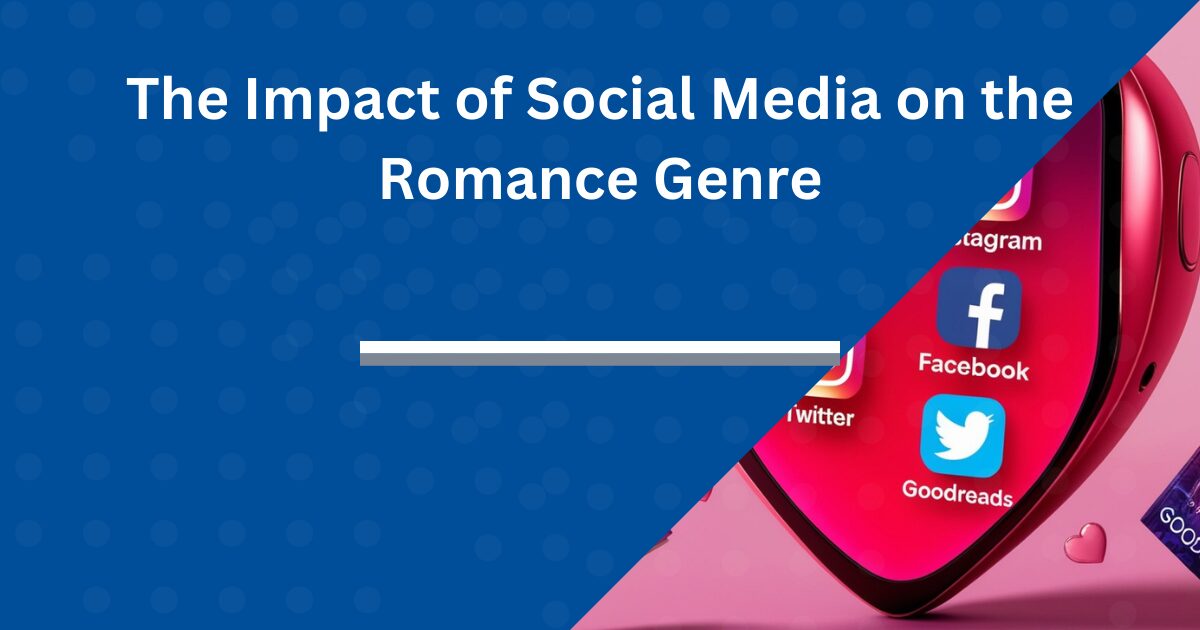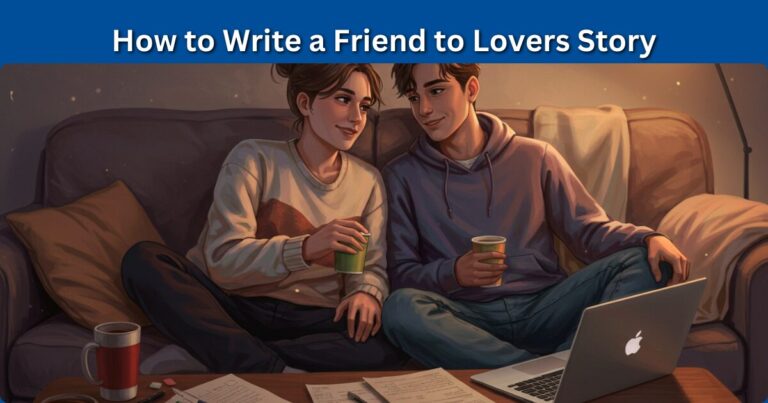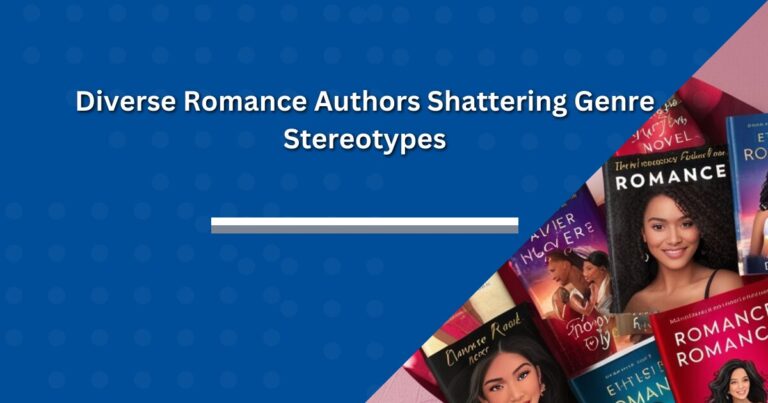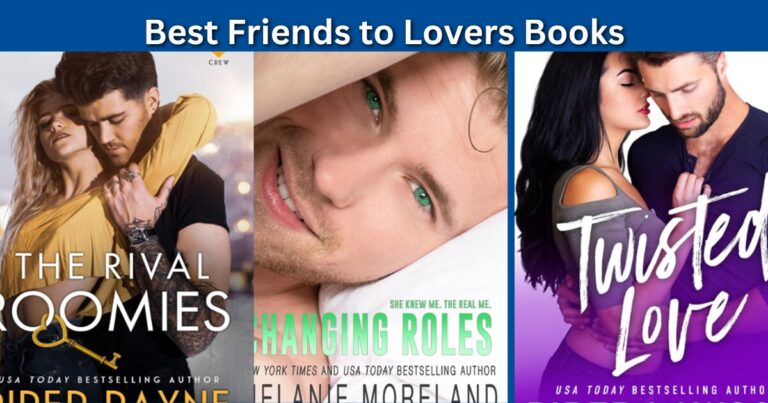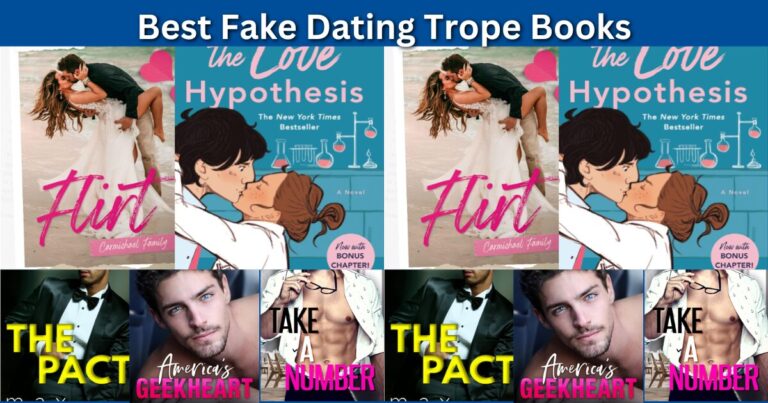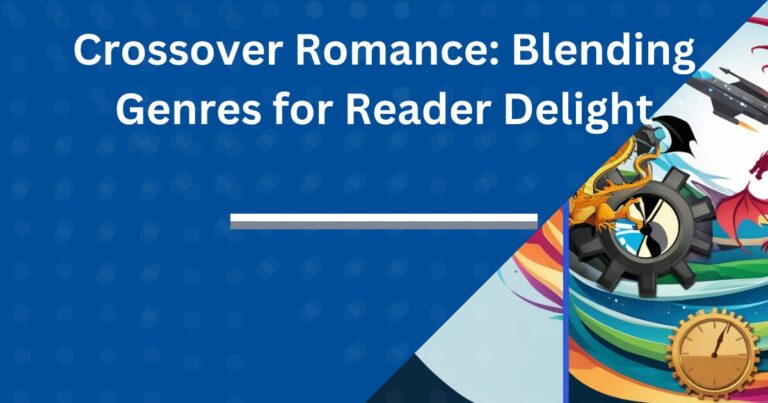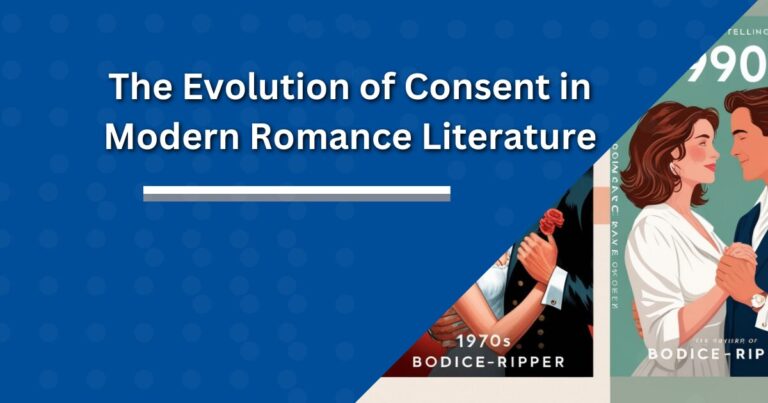Social Media’s Influence on Romance Books: Key Trends
According to CBC, the rise of platforms such as TikTok has completely transformed how readers find new books.
Consequently, social networks become the primary platform for making recommendations and discussing romance books.
The world of hearts, flowers, and happily-ever-afters is getting a digital makeover.
This is why in this article we focus on how social media relates to romance novels and their readers.
Ready to grab your most comfortable reading position and sit back (and maybe use a fan) because it is going to get hot as we dive into how TikTok, Instagram, Twitter, and all the other platforms are changing the game for both authors and readers.
Social Media's Impact on Romance Books: Key Takeaways
- #BookTok: Huge influence on sales and trends.
- Instagram: Changing book cover designs.
- Twitter: Pitch events connecting authors and agents.
- Facebook Groups: Building reader communities.
- Goodreads: Shaping preferences and author reputations.
- Overall Impact: Expanding the boundaries and increasing diversity of the romance genre.
- Benefits for Readers: Opportunities to explore new titles and authors within one location.
- Benefits for Authors: The ability to engage with readers directly.
Social media is changing how we search for, read, and interact with romance books.
The Rise of #BookTok: A New Chapter in Romance Marketing
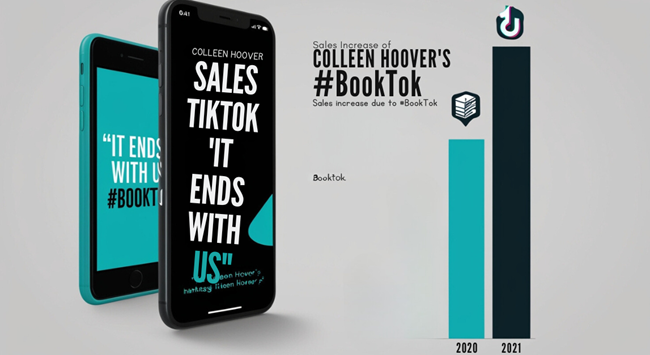
I will admit that when my students first informed me about this app, I rolled my eyes.
‘Again?
A new social platform?’
I thought.
‘Not in this century!’
But boy, was I wrong!
TikTok, or to be more specific, #BookTok, has carved out an incredible niche in romance writing.
The day I surrendered and finally caved into the itch to install TikTok, I was sucked into a vortex of book recommendations, author interviews, and passionate readers gushing about their favorite romance novels.
The next thing I knew, I had a cart full of books on Amazon and an obsession with short-form video content. Uh Oh!
But it is not only readers like me that are benefiting from #BookTok. The impact on book sales and author visibility is nothing short of explosive.
NPD BookScan has it that by 2021 adult fiction unit sales increased by 30.7% from the previous year, and that #BookTok was largely responsible for some of that increase.
Take, for example, Colleen Hoover. Her 2016 novel titled ‘It Ends With Us' became widely known in 2021 solely due to social media even though it was released five years before.
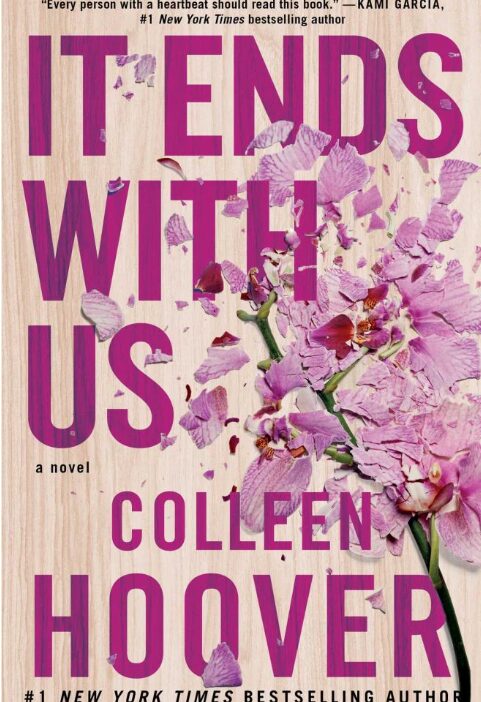
The book achieved sales of 925,221 copies in 2022 while only fewer copies were sold in 2020. That's totally off the charts in terms of percent increase.
And Colleen’s not the only one. Authors like Emily Henry, Ali Hazelwood, and Taylor Jenkins Reid have all experienced a tremendous sales surge thanks to #BookTok.
However, it is not limited to sales alone. #BookTok is actually changing the sorts of narratives portrayed in romance books.
Can you recollect when everyone was obsessed with vampires after Twilight?
Well, #BookTok is having a very similar effect but with a broader and much quicker range of influence.
In particular, trends such as enemies to lovers, forced intimacy and morally ambiguous characters, have become trending in recent years. I have even seen some of my pupils in creative writing classes using these words in their projects, which was fascinating.
It's like a whole new language of love.
What's really cool about #BookTok is how it's leveling the playing field between indie authors and traditional publishers. I've seen self-published authors go viral overnight, their books suddenly in higher demand than those from big publishing houses.
It's democratizing book promotion in a way we've never seen before.
For instance, take the case of the self-published writer E.L. James. Of course, as we all know, “Fifty Shades of Grey” was a phenomenon before TikTok, but the platform has given her newer books a massive boost.
Her book, “Freed,” became an instant bestseller partly due to the buzz generated on #BookTok.
But here’s the rub, while #BookTok is amazing for discovery, it's not a guaranteed ticket to success. I've seen authors try to force viral moments, and let me tell you, it rarely works. The key seems to be authenticity and engaging content that resonates with readers.
So, be it the author who is trying to get his work out there or be it the reader looking for his next favorite romance novel, the influence of #BookTok cannot be taken lightly.
One last thing though. Just be prepared to lose hours scrolling through video after video of passionate readers sharing their love for all things romance.
Instagram-Worthy Covers: Judging Books by Their Aesthetic
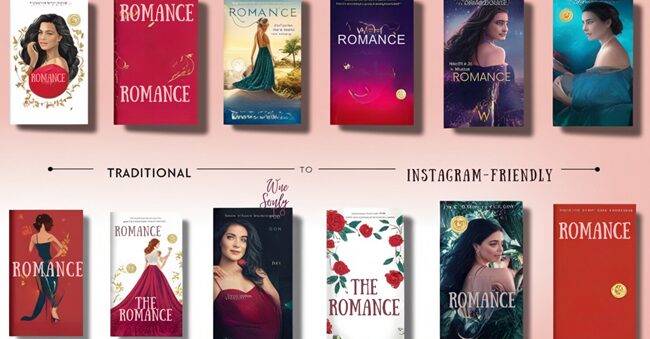
To be honest, we all understand and agree that there are times when we have judged a book by the cover picture. But with Instagram, book covers have become more important than ever.
Welcome to the world of “Bookstagram,” where a visually striking cover can make or break a book's success.
I’ll never forget the day I first came across an account dedicated to Bookstagram. It was one of those days where you keep scrolling Instagram to avoid grading papers (don’t judge, we all do it), and I came across this amazing photo of a romance novel with flowers, a cup of coffee, and a blanket.
This is it!
I thought to myself, “Books have the capacity to be Insta-worthy too.”
Fast forward to the present, I have witnessed the transformation of romance novel covers into more Instagram-friendly graphics.
Gone are the days of Fabio's flowing locks and heaving bosoms (although I'll admit, I have a soft spot for those classic covers). Fast forward now; minimalistic graphics, big fonts, and beautiful color palettes that invite one to take a shot are becoming the norm.
Take “The Kiss Quotient” by Helen Hoang, for example. Its simple yet striking cover, featuring two cartoon faces about to kiss, became instantly recognizable on Instagram feeds.
Or look at the covers of Talia Hibbert's “Brown Sisters” series. The bold colors and illustrated characters not only look great on a shelf but also pop on a smartphone screen.
This shift in cover design has to be more than just looking pretty. It is affecting the readers' tastes and their buying choices.
In a survey conducted by Bookbub, it was found that a well-designed cover, which aligns with genre expectations, is critical when readers are deciding whether to buy a book or not.
And let us face it, while looking at the cover of a nice book on Instagram, who does not wish to press the ‘buy’ button?
It is one thing to talk about the cover design. However, the emergence of Bookstagram has created interesting collaborations between authors and Instagram influencers. There are exclusive cover launches, photo contests with picture-book themes, and even book boxes assembled by influencers' teams.
One of my favorite examples is how Christina Lauren (in reality, two authors) collaborates with bookstagrammers during the official cover launch for their novels.
They'll send out advance copies with special props for Instagrammers to use in their photos, creating a coordinated and visually stunning release campaign.
Now, I know what you’re thinking.
But what if I am not a professional photographer?
How do I go about photographing a book that will look like it was meant for Instagram?
I know this is what some of you are asking. I asked myself the same question when I first dipped my toes into the Bookstagram world.
But here are a few things I have learned and want to share them:
- Natural light is your friend. Whenever possible, photograph books near the windows to avoid harsh shadows.
2. Use props that complement the book's theme. Reading a beach romance? Throw in some seashells or sunglasses.
3. Try different positions. Don't just lay the book flat – prop it up, stack it with other books, or try a birds-eye view.
4. Try different backgrounds. A plain white sheet can work wonders, or try using wallpaper samples for a pop of pattern.
5. Last, but not least – enjoy it! If you are fond of the book, this should definitely be reflected in the picture.
At the end of the day, the whole thing comes down to the book (the story inside the cover.
That said, in this era when visuals reign supreme, a nice-looking, Instagrammable cover can tilt the odds to help the book stand out instead of getting lost in the sea of dozens.
So, next time you're choosing a romance novel, go ahead and judge it by its cover… just a little bit. After all, a picture is worth a thousand words, right?
Twitter Pitch Parties: From Hashtag to Happily Ever After
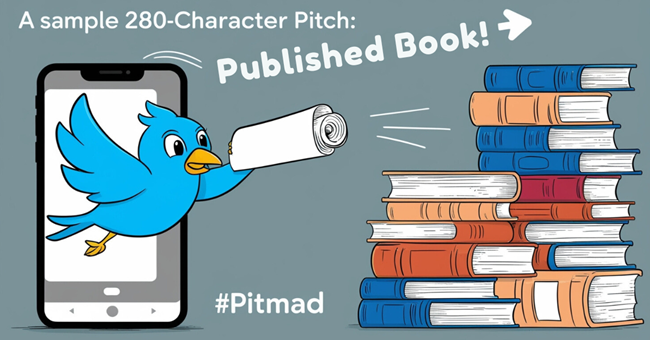
Okay, for the sake of argument, let’s assume that you are also a person who likes to read and indulge in romance once in a while. Well, I can hear you saying – “ Twitter? Come on, that’s only for raving politicians and cat videos”.
But I will tell you this – it has also turned out to be a place for romance writers who are looking for their big chance.
Welcome to the world of Twitter pitch parties.
I first stumbled upon this phenomenon when one of my former students, an aspiring romance writer, excitedly told me about something called #PitMad.
At first, I thought she was talking about some sort of angry bird game. But no, it turns out it's a quarterly event where writers pitch their unpublished manuscripts in 280 characters or less.
Now that’s an interesting concept.
The most popular pitch events for romance writers are #PitMad and #DVpit. Such events are exactly like speed dating, only instead of finding a perfect partner, the author’s aim is snagging a publishing house. In 10 seconds, an author should hook an agent or a publisher with only one pitch. This is nerve-wracking, exhilarating, and sometimes life-changing.
Take Tashie Bhuiyan for example, she pitched her book “Counting Down with You” for young adult romance at the #DVpit event in 2018. She tweeted something that caught an agent’s eye, and fast forward to 2021, the book was released and it quickly became a bestseller.
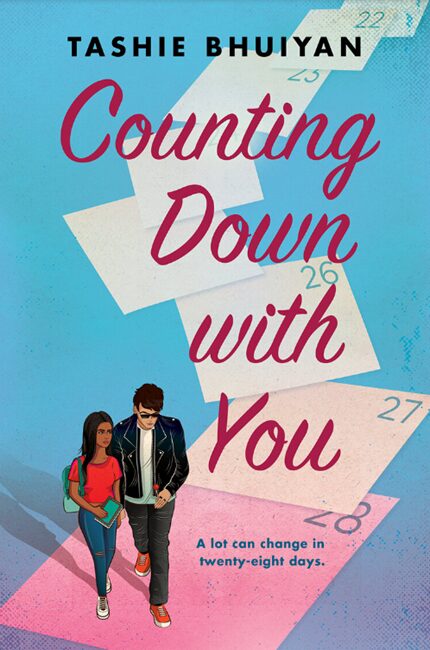
Relatively modern fairy tale, wouldn’t you agree?.
Let the story of Alexa Martin serve as an example. She pitched her sports romance novel ‘Intercepted' in #PitMad. She not only got an agent but her book was the first in a series of successful books.
All from a simple tweet, imagine that!
These Twitter pitch events known as pitch parties have truly been a game changer in the ‘querying’ process. Back in my day (oh gosh, I sound old), querying meant sending out hundreds of meticulously crafted letters to agents and publishers, and then waiting months for a response.
Now, authors can potentially bypass that whole process with a well-crafted tweet.
However, I should inform you that this is the most challenging part: creating the perfect Twitter pitch is a whole new ballgame. It is an art form in itself. I have seen several of my students stress over these pitches more than their actual book manuscripts.
So, if you are an aspiring romance writer wanting to explore Twitter pitching, here are a few tips I have compiled:
- Get them in 3 seconds: You have 280 characters. Get it right in the first sentence: Captivate and make every word count. Don’t waste time finishing your thoughts.
2. Showcase your unique angle: What makes your romance stand out? An unusual setting? A quirky character? Highlight it!
3. Employ appropriate tags: Apart from the event hashtag, use things like #Rom for romance, or specific sub-genres like #ParaRom for paranormal romance.
4. Stay away from clichés: As if they haven’t heard it before, “Once upon a time”, “bell rings and boys are at the door”, “girl loves a boy” and that’s all. Solve this problem in an interesting way.
5. Proofread, proofread, proofread: A typo in a 280-character pitch stands out like a sore thumb.
6. Do not leave out comp titles: If there's space, include comparison titles. “Pride and Prejudice Meet Bridgerton in Space,” tells agents a lot in just a few words.
Okay, I’ll be frank. The first time I came across these specific Twitter pitch parties, for some reason, I was a little bit doubtful. It sounded so… well, cold.
But now that I have come to understand it more, I have started viewing it as just one of the weapons in every author’s battle. It's not replacing traditional querying entirely, but it's opening up new avenues for authors who might otherwise struggle to get their foot in the door.
Plus, there’s something kind of magical about seeing these pitches pop up on my Twitter feed. It almost feels like a preview of the next big romance blockbuster before its actual release. I may or may not have a secret list of pitches I'm keeping an eye on, ready to pounce when they finally hit the shelves.
Well, if you are a budding romance novel writer or just a romance reader on the lookout for great materials, do not dismiss the potential of a single tweet. Perhaps, the next great tale of romance is only 280 characters away.
Facebook Groups: Building Reader Communities and Buzz
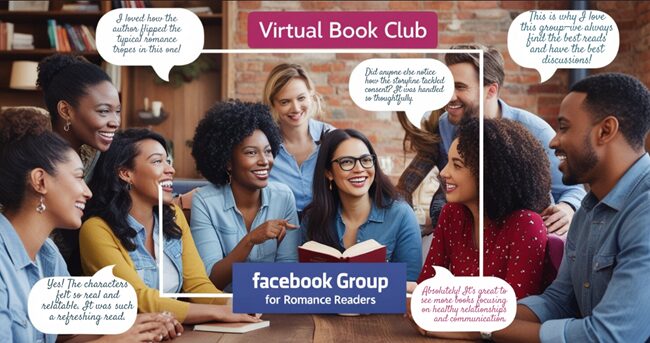
Right, let’s touch on Facebook now. I know it is no longer the coolest kid on the social media block anymore. But when it comes to romance books, Facebook groups are like the cozy book clubs of the internet.
This is where readers come to squeal about their favorite books, criticize different plots, and at times, even chat with the authors of their most loved books.
That day when I found my first romance book Facebook group, I will always remember. It was one of those late nights when I was a bit high mindlessly scrolling (as one does), when I saw a post from a friend raving about this amazing group she'd joined.
I followed this link and all of a sudden, I was in a place where quite a number of people liked reading romantic novels, just like me. I felt as if I had found my tribe!
These Facebook groups are also essential to the level of involvement that readers get. They are like hearths or water coolers for embracing the fans to converge for purposes of chatting, reviewing new books, recommending novels and sometimes even authors, and even defining how some of the series progress.
In one of the groups I am in, there is one author who often does polls on members for the next character, a secondary one, who should be given a book. It's like we are there collaborating on the work and let me tell you, that makes you feel hella good as a reader.
However, it's not just about reader engagement. Many authors are getting creative with these groups. A lot of them use them to get beta reading, feedback, and early reviews.
I've seen authors share snippets of works-in-progress, asking for feedback on everything from character names to plot twists. It's like getting a backstage pass to the writing process.
One of my best success stories is about the author Lucy Score. She founded a Facebook group called “That’s What She Said” where readers of her book could join. It now has over 21,000 members. The group is incredibly active, with readers discussing her books, sharing fan art, and even organizing meet-ups.
Lucy regularly interacts with the group, sharing exclusive content and using their feedback to shape her future books.
. It's a win-win: the readers feel connected to Lucy and her work, and Lucy gets valuable insights and a dedicated fan base.
Another great example is Penny Reid's “Sharks of Awesome.” This group, with over 15,000 members, is known for its fun, quirky atmosphere that mirrors Penny's writing style. She uses the group to host live Q&As, share behind-the-scenes info about her writing process, and even crowdsource ideas for character quirks or plot points.
She gives out secrets as to how she writes her book and what she is working on and actually asks for ideas for characters or plot hooks.
But here's the thing: it is not as easy to manage a successful Facebook group as it may appear. I have witnessed authors struggling and failing to keep their groups alive and active.
if you're an author thinking about starting a group (or a reader looking for a great community to join), here are a few tips I've picked up:
- Set clear guidelines: The best groups have rules that keep discussions respectful and on-topic.
2. Instigate members to participate: Polls, questions, and other different sources help members stay active.
3. Be in the picture: Groups flourish best when an author or their moderators are very active in the group.
4. Provide additional materials: Extra materials such as snippets, cover samples, or additional scenes make the members feel more attached to the group.
5. Promote and maintain a positive environment: Recognizing birthdays, anniversaries, and reading achievements brings lots of joy to the members of the group.
Now, I have quite to admit that there have been instances when I've lost hours (okay, maybe days) to these Facebook groups. There's something addictive about being able to dive deep into discussions about your favorite books with people who are just as passionate as you are.
They're breaking down barriers, allowing for direct communication, and fostering a sense of community that goes beyond just reading a book.
I've made friends, discovered new favorite authors, and even picked up some writing tips for my own secret work-in-progress (shh, don't tell my students!).
But more importantly, these groups are transforming the nature of the relationship between the authors and the readers.
In a way, they're bringing back the intimacy of those small, local book clubs, but on a global scale. In a sense, they are reinvigorating the closeness of small, community reading groups, only this time, worldwide.
So, next time you finish a romance novel and find yourself bursting to talk about it, remember: there's probably a Facebook group out there full of people who feel the same way.
Just be warned: you might end up with a TBR list a mile long and a serious case of one-more-post syndrome!
Goodreads: The Social Network for Romance Bookworms
let's talk about the OG of book-related social media: Goodreads. If Facebook Groups are these relatively smaller and cozier book clubs, then today you can imagine Goodreads as this gigantic book fair where people from all over the globe come and talk about books every second of the day.
It's a dream come true for anyone interested in reading romance.
I still quite well remember all the steps that I had to take to create an account on Goodreads. I thought I was just signing up for a way to keep track of my reading list. I had no idea that I was venturing into another world that would alter the way I search for, read, and discuss romance novels.
Goodreads has become a powerhouse in influencing romance genre trends and reader preferences. It's as if there's one huge focus group for the romance business.
I don't recall how often I witnessed a book almost out of the blue getting lots of attention, simply because it was getting noticed on Goodreads.
It is interesting to watch!
Take “The Love Hypothesis” by Ali Hazelwood for example. When it first hit the shelves, it was just another romance novel. But then it gained popularity among Goodreads users who were praising the book, writing awestruck reviews of the work and recommending it left and right.
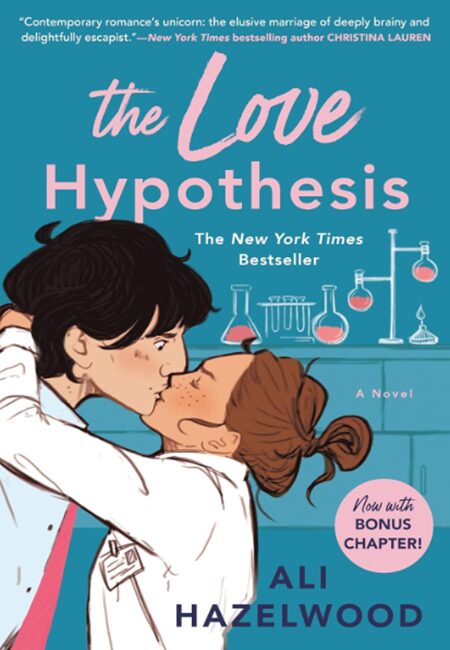
In no time, it was at the top of the most recommended lists and was being snatched up for a film adaptation. Talk of the good of word of mouth.
This is not only the case with popularity. Goodreads user reviews – that can also make or break the reputation of an author.
I have seen debut authors hit the limelight courtesy of favorable Goodreads reviews and then I have also witnessed well-known writers being unable to bounce back after a negative review of a book.
It's a double-edged sword, for sure.
I admit, as a reader, I appreciate how Goodreads has made things a little less stressful for me as I look for my next favorite book. The ‘Readers Also Enjoyed‘ feature has helped me find a few gems that I would have never stumbled upon.
And let me not even start talking about the yearly Reading Challenge. Nothing motivates me to power through my TBR pile like seeing that little progress bar creep toward my goal.
For the authors, Goodreads has evolved into a tool for communicating with the readers and promoting their books. For example, many authors tend to use the platform to engage their readers through Q and A, competitions, and updates on their books.
It's like having a direct line to their fanbase.
‘Ask the Author‘ feature of Goodreads, I simply cannot do without. One time, I posted a question concerning the writing of Talia Hibbert and later when Talia Hibbert responded, I thought I had hit the jackpot.
That's why modern readers cannot get enough of their favorite writers because even such small interactions leave an imprint in their minds.
However, one of the most captivating uses of Goodreads that may have been the least expected is its role in tracking new subgenres and tropes in romance fiction. By analyzing user-generated lists, reviews, and ratings, publishers, and authors are likely to capture trends just before they become popular.
For instance, I'm seeing more and more romances with neurodiverse characters. This entire new sub-genre was created because of popular books like The Kiss Quotient by Helen Hoang and The Rosie Project by Graeme Simsion. And all of it can be followed through Goodreads statistics.
I will be honest, “Goodreads” is not a hundred percent winner. There can be a problem with the layout and some features like rating reviews can be a bit epically chaotic. Still, I think it is a useful application for both lovers and writers of romance literature.
So, wherever you find yourself on the Goodreads experience spectrum, from having had it long enough to be able to advance boldly to starting for the first time, let me persuade you to join.
Rate some books, leave some reviews, and join some groups. Trust me, you will never look at your TBR the same way again.
Social Media's Impact on Diversity in Romance
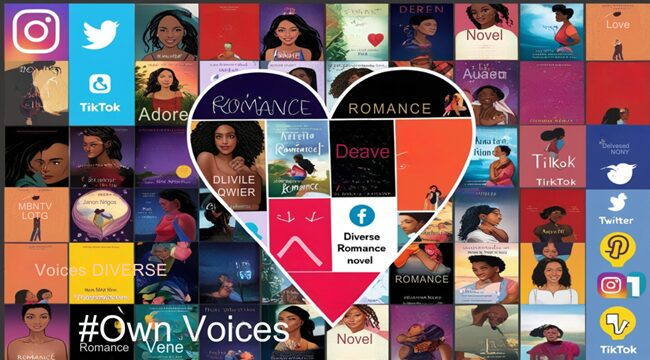
Okay, let's get a big one out the way: the proliferation of social media has reinvented the concept of diversity in romance fiction. This is a topic that resonates with me and, boy, the change has been revolutionary.
Back when I first started reading romance novels (we're talking decades ago, folks), the genre was… well, let's just say it was pretty homogenous. But social media has blown the doors wide open, amplifying diverse voices in a way we've never seen before.
I will, however, never forget how I first discovered the #OwnVoices hashtag on Twitter. It was like a lightbulb moment. Here are the authors from different backgrounds writing stories that are practically based on their lives. And the audience was glued to it.
It was evidence that there was a market that was hungry for diverse romance stories.
The rise of #OwnVoices has had a huge influence on publishing decisions. Publishers who might have been hesitant to take a chance on diverse stories are now actively seeking them out. And this is not difficult to understand.
Books like ‘The Wedding Date‘ by Jasmine Guillory, and ‘Red, White & Royal Blue‘ by Casey McQuiston have all topped charts, a clear indication that such books are in demand. This proves that readers are craving these diverse perspectives.
But it is not only about the books that publishers churn out now. Readers have also found a voice through social media to express that they want to see more representation of what people consider romantic.
So many times I have seen both Twitter threads and Instagram posts that would clamor for more diversity in book covers or even the story itself.
And you know what?
Publishers and authors do take note.
For those who are not aware, take for instance the #WeNeedDiverseRomance campaign. From a simple hashtag, it has escalated to a conventional anticoon campaign about the absence of diversity in romance literature.
It has spurred on reading initiatives, highlighting of writers, and even reforming of book publishing policies.
Talk about the power of social media.
Of course, it hasn't been all smooth sailing. Authors from marginalized communities still contend with various problems in this age of social media. I have noticed that authors of color often get ridiculed for writing outside of their ethnicity, while literary criticism suggests that white authors' diversity of character is considered a plus.
It's a complex issue, and social media has brought these discussions to the forefront.
But all that said, I still think that there are great things that have come out of social media for authors from marginalized backgrounds.
Sites like Twitter and Instagram have enabled these authors to create their own communities, engage with readers straight away, and bypass traditional gatekeepers.
One achievement that always puts a smile on my face is that of Alyssa Cole. She used social media to build a dedicated fanbase for her inclusive historical and contemporary romances. Now, she is a star author with a loyal fanbase, and ‘When No One Is Watching‘, a book by her, is being adapted for Netflix.
It's a testament to the power of social media in amplifying diverse voices.
As a reader, I have personally experienced that social media has changed my life comprehensively including my reading in a way that I never expected. I have come across new authors and new works through Twitter and Instagram that I never would have come across.
It's enriched my reading life and broadened my perspective, and for that, I'm truly grateful.
So, where does romance diversity expand to?
Judging from how social media has taken off today, this is still the tip of the iceberg. There is an increasing demand for showing a variety of body shapes, abilities, and gender orientation representation in romance novel castings.
And you know what?
I am in support of that. Let us not forget that love is at the center of romance. Love is also universal. It's time our stories and novels reflected that.
Final Thoughts
It is gratifying how far we have traveled, and this time to unfold the amazing and astounding ways in which social media and networks have revolutionized romance novels.
From the viral sensations of #BookTok to the community-building power of Facebook groups, it's clear that social media has become an integral part of how we discover, discuss, and fall in love with romance books.
As we have seen, such platforms are not only changing the book marketing paradigm but rather, they are shaping the narrative – what gets told and by whom, and how the readers relate to the story.
It is a new world order, and while it comes with its challenges, I can't help but feel excited about the possibilities. I am just optimistic about the new things that may happen.
So, what does this mean for you, dear reader?
Well, that depends on who you are:
- If you are a romance reader, I suggest you plunge into those social media communities. Join a Facebook group, follow some bookstagrammers or brave the waters of #BookTok. Who knows, you probably will find your next favorite book somewhere there.
- If one is unpublished and looking to write romance novels, these social networks are a great way to reach out to readers and writers. However, it is worth bearing in mind that, authenticity is key. Social media should not be for promotional communication only, it has to be for genuine communication.
If you are a publishing professional, these social media trends are worth watching out for. If anything, these are likely to be the guiding force for tomorrow's publishing industry. Staying ahead of the curve could give you a significant advantage.
Or maybe you are interested in how reading trends change in the age of social media. I hope this post has given you some food for thought.
As for me, I'm going to keep exploring these digital romance communities, looking for more and more authors, and yes, adding way too many titles to my TBR pile which is growing exponentially.
But then again, there are worse problems to have, right?!
For now, I'm going to hand it over to you.
In what ways have social media changed your romantic reading habits?
Have you discovered any new favorite authors through these platforms?
FAQs
How can I use TikTok to find new romance books?
First, find and follow relevant BookTok accounts, search for and interact with videos tagged with #RomanceBooks and #BookRecommendations, and look for videos regarding books you love already. It is only a matter of time until TikTok begins to show you more romance book content.
You may also want to take a look at the comments section to get more ideas.
What's the best way for new romance authors to promote their books on social media?
Focus on 1-2 social media platforms that you are interested in and start using them. Share behind-the-scenes content, engage with readers, and participate in writing community hashtags. There is power in posting consistently.
You might also want to conduct live Q and A sessions, share character aesthetics, or do cover reveals to build excitement for your books.
How has Instagram changed romance book covers?
Now, the covers are aesthetically appealing and are “Instagrammable“- all thanks to the influence of Instagram. Think bright colors, simple graphics, and pictures of characters.
Today publishers and cover designers think about how the cover will appear in a tiny box on a smartphone. Some even have elements such as plants and coffee cups, which are very Instagram-friendly.
Are Facebook groups still relevant for romance readers?
Definitely!
On Facebook groups, you can have all sorts of discussions that get deep, interact with authors, and seek out reading partners. They're like cozy online book clubs. Look for groups focused on your favorite subgenres or authors.
Please, make sure to read and adhere to the group rules before posting.
How can I use Goodreads to discover diverse romance books?
Use the Listopia section of Goodreads to see the lists of diverse romances. Check out reviewers who read diversely. Participate in groups with the #OwnVoices movement or other diverse categories.
Look at the “Readers Also Enjoyed” part of the page for books by diverse authors you've liked.
